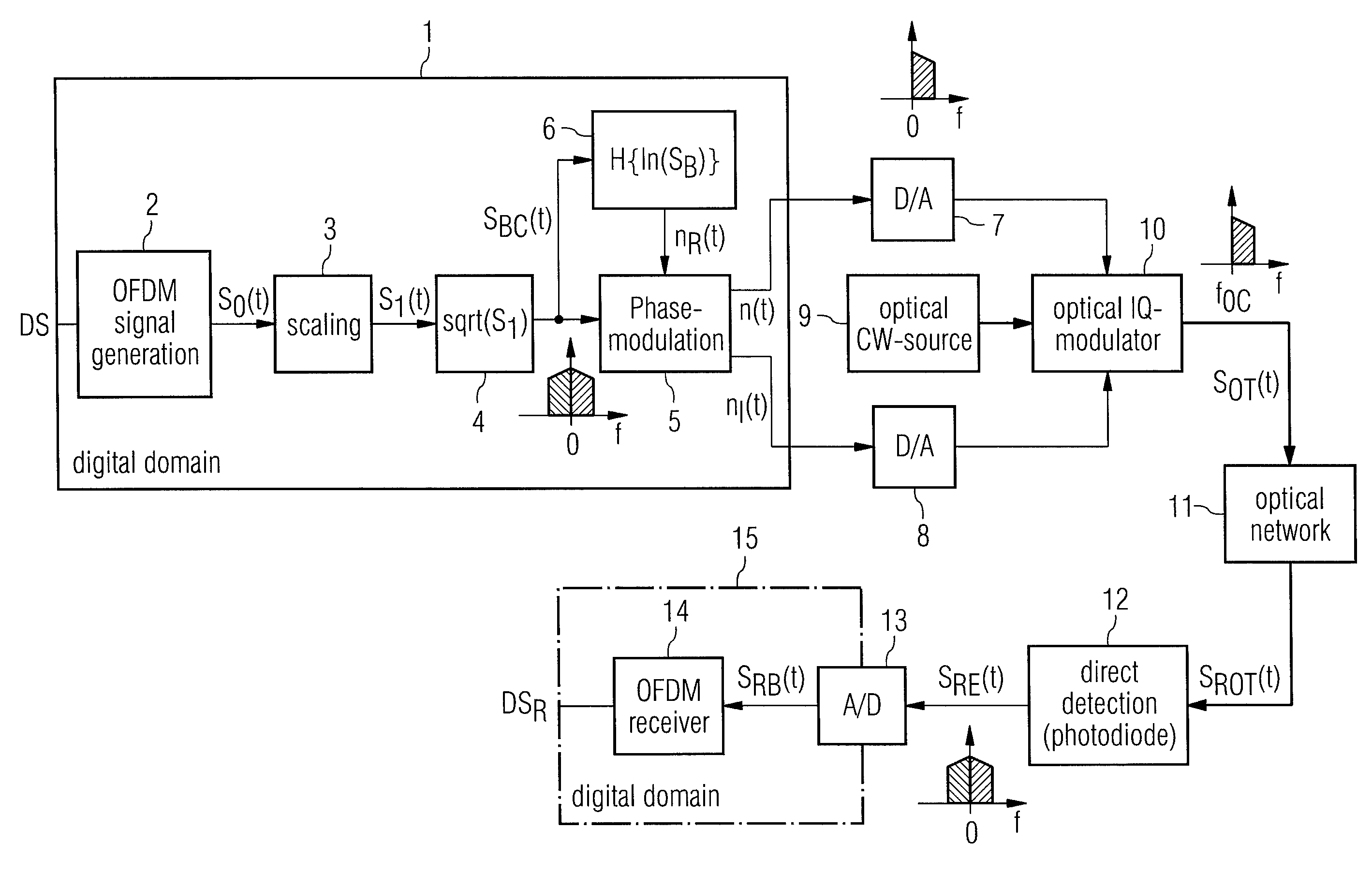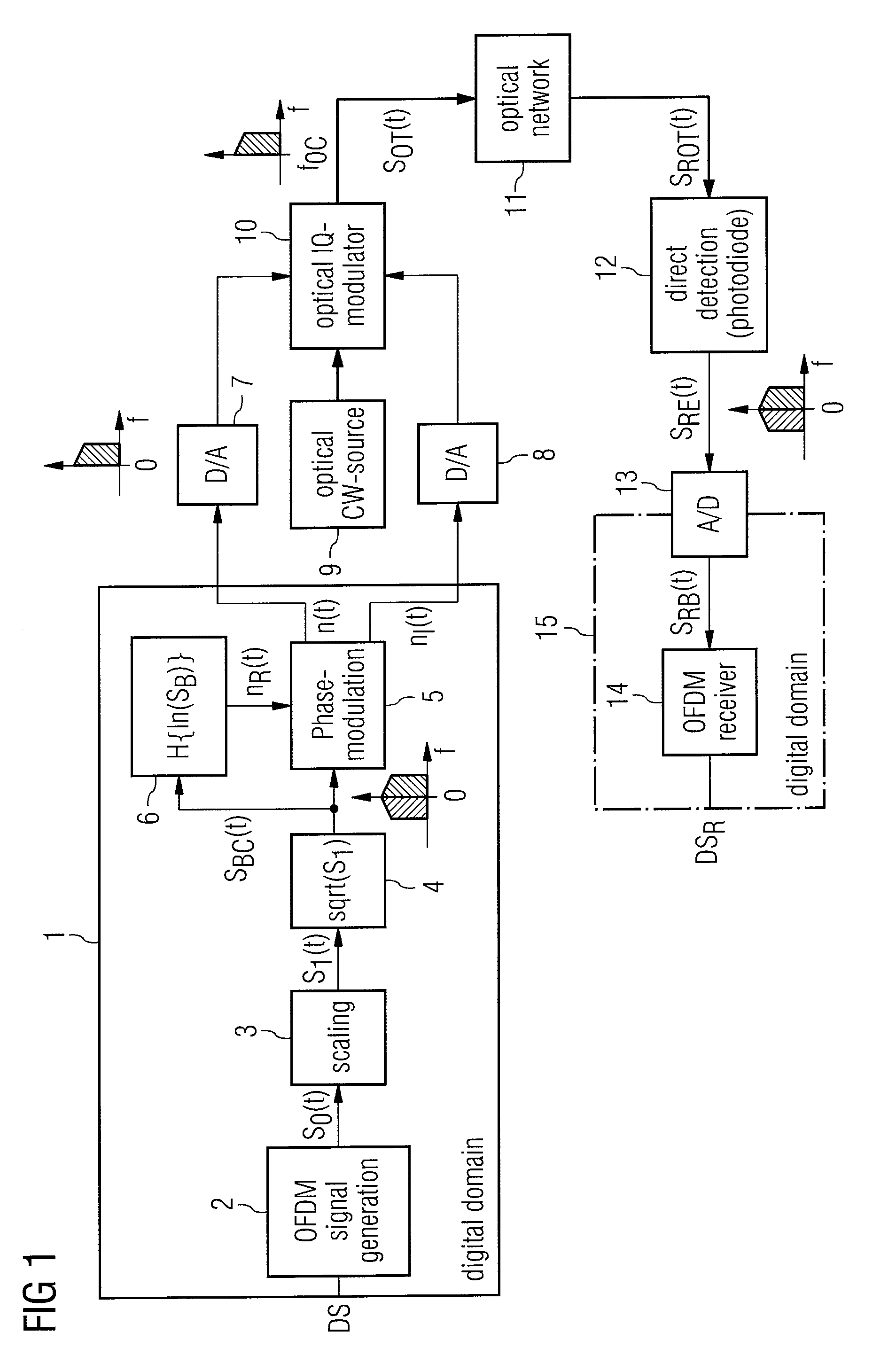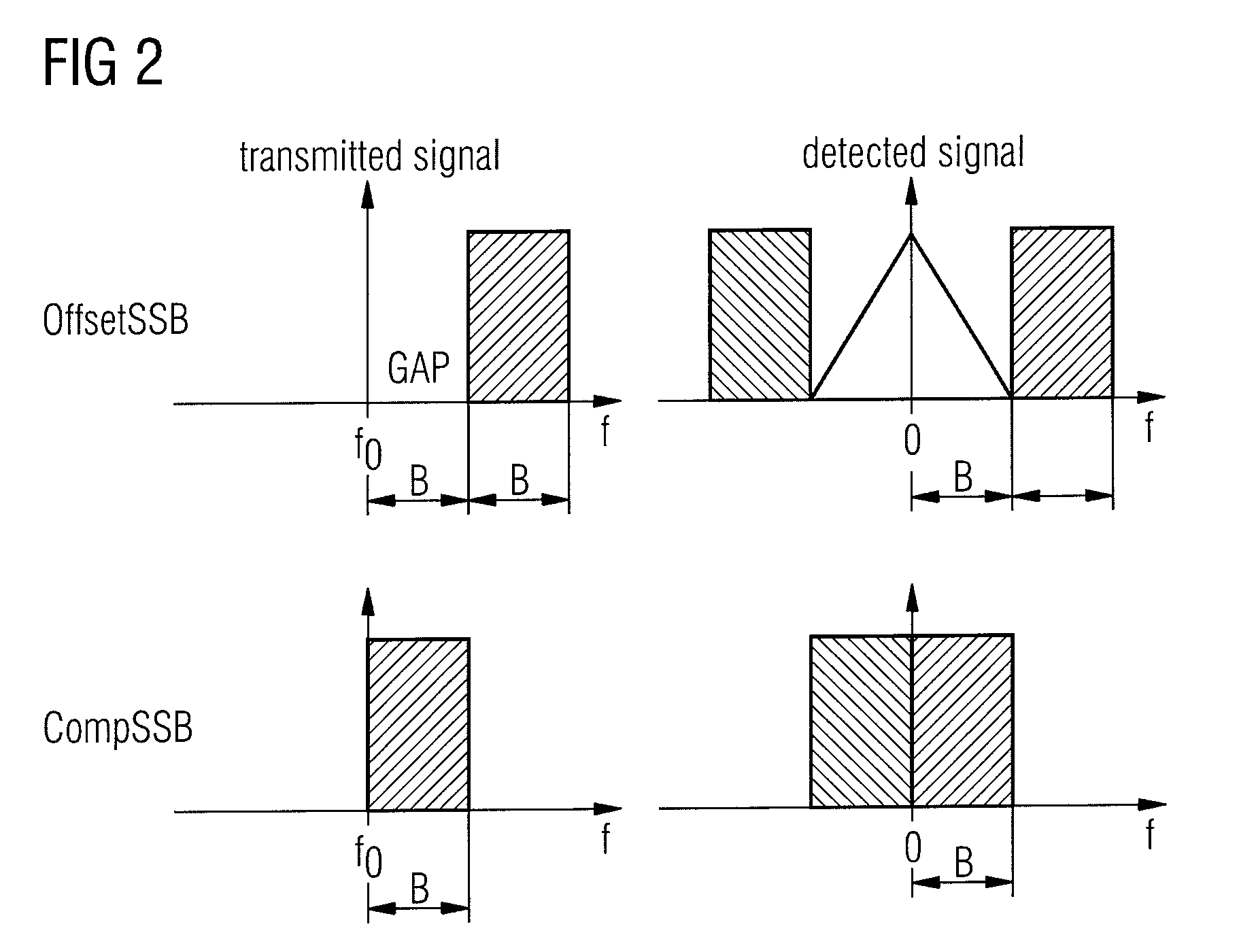Method and arrangement for transmitting an optical ofdm-signal
a technology of orthogonal frequency division and signal, applied in the field of method and apparatus for transmitting optical orthogonal frequency division multiplex signal, can solve the problems of large amount of bandwidth occupied, different time delays for different frequencies, and chromatic dispersion of optical fibers, and achieve the effect of facilitating generation
- Summary
- Abstract
- Description
- Claims
- Application Information
AI Technical Summary
Benefits of technology
Problems solved by technology
Method used
Image
Examples
first embodiment
[0023]FIG. 1 illustrates an OFDM transmission system with an OFDM transmitter 1-10 and an OFDM receiver 12-15. Only essential parts are illustrated, filters etc. are not shown. The illustrated units in the digital domains are functional blocks, e.g. realised in a first digital processor (2-6) and a second digital processor 14.
[0024]At least one data signal DS is fed to an input terminal 1 of an OFDM signal generator 2 of the OFDM transmitter 1-10. The data signal DS is converted into parallel signals, which are associated with a plurality of subchannels. Each subchannel is characterized by an orthogonal subcarrier frequency. The signals are fed to an OFDM signal generator 2 of the transmitter. The OFDM signal generator 2 modulates the signals onto the orthogonal subcarrier frequency signals. E.g. intensity modulation, four phase modulation, differential phase modulation or a combination of phase an intensity modulation could be applied.
[0025]The modulated signals of the subchannels ...
second embodiment
[0046]All signals of the second embodiment corresponding to the signals of the first described embodiment are named “modified” signals and carry an additional index “C”.
[0047]Avoiding the calculation of the square root of the OFDM signal SO(t) the modified limited signal S1(t) becomes a modified baseband signal SBC(t) and the equations (5) and (6) alter to
SBC(t)=S1C(t) ̂φC(t)=H{ ln(SBC(t))}. (8) and (9)
and according equation (4) an modified modulation signal nC(t) becomes
nC(t)=em(t)=SBC(t)ejφC(t) (10)
[0048]A main problem of the CompSSB is the high carrier to signal power ratio. A possibility to reduce it is a reduction of the power range of the OFDM signal before applying the calculation of the modified baseband signal SBC(t) for the modulation of the optical carrier fOC. Different methods of clipping can be applied. E.g. a constant or variable clipping factor Clin can be applied to S0(t) or S1C(t), e.g.
S0C(t)=S0(t)mean(S0(t)2)·clin(11)
SOC(t) is an internal calculated signal, whic...
PUM
 Login to View More
Login to View More Abstract
Description
Claims
Application Information
 Login to View More
Login to View More - R&D
- Intellectual Property
- Life Sciences
- Materials
- Tech Scout
- Unparalleled Data Quality
- Higher Quality Content
- 60% Fewer Hallucinations
Browse by: Latest US Patents, China's latest patents, Technical Efficacy Thesaurus, Application Domain, Technology Topic, Popular Technical Reports.
© 2025 PatSnap. All rights reserved.Legal|Privacy policy|Modern Slavery Act Transparency Statement|Sitemap|About US| Contact US: help@patsnap.com



